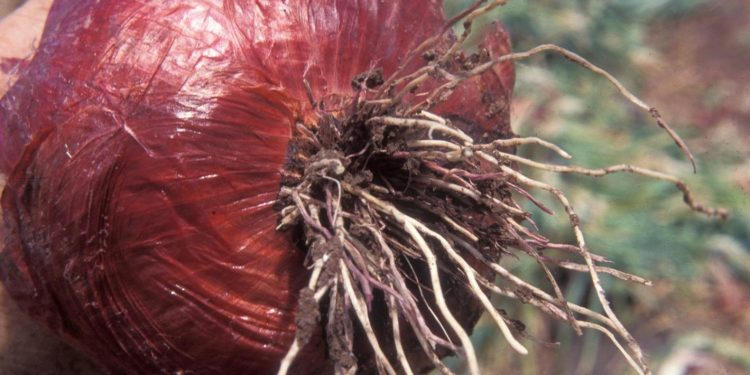PlantDiseaseManagement #FungalInfection #CropProductivity #BiocontrolAgents #GeneticResistance #EnvironmentalSustainability
Pink root, caused by the fungus Phoma terrestris, is a serious threat to the productivity of onion crops worldwide. This disease causes pink discoloration and root decay, leading to stunted growth and reduced yields. The fungus can persist in the soil for several years, making it difficult to control. As a result, it has become a major concern for onion growers and agricultural researchers alike.
The development of pink root can have serious consequences for the agricultural industry. Reduced onion yields can result in economic losses for farmers, while consumers may face higher prices and reduced availability of onions. Additionally, the use of fungicides to control the disease can have environmental consequences, including the potential for the development of resistant strains of the fungus.
Efforts are underway to develop new strategies for managing pink root. These include the use of biocontrol agents, such as bacteria and fungi, that can compete with the pathogen for resources in the soil. Researchers are also investigating the use of genetic resistance to combat the disease, either through traditional breeding methods or genetic engineering.
In the meantime, farmers can take steps to minimize the impact of pink root on their crops. These include rotating crops, avoiding the use of infected soil, and implementing good sanitation practices in the field and in storage facilities.
As the threat of pink root continues to loom over the agricultural industry, it is critical that researchers and farmers work together to develop effective strategies for managing this disease. By doing so, we can ensure the continued productivity and sustainability of onion crops worldwide.































